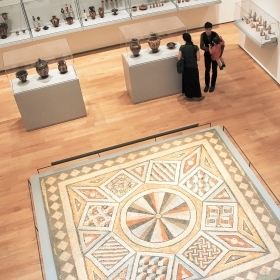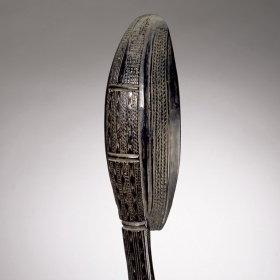The cover photograph for the illuminating new biography of the sculptor Louise Nevelson represents her as many remember or imagine the artist. This was “The Nevelson,” as her friend playwright Edward Albee called her.

Laurie Wilson ’62
Louise Nevelson: Light and Shadow
Thames & Hudson
512 pages, $39.95
The cover photograph for the illuminating new biography of the sculptor Louise Nevelson represents her as many remember or imagine the artist. This was “The Nevelson,” as her friend playwright Edward Albee called her. Dressed in a flowing caftan-like garment, draped in chunky gold jewelry, heavily made up (including her signature thick black eyelashes), sporting a huge cowboy hat, and smoking a long cigarette, she presented herself in a bold, take-no-prisoners attitude. In her prime, she was also profane, a heavy drinker, unapologetically sexual, and endlessly self-dramatizing. Biographer Laurie Wilson ’62 admits that some of Nevelson’s stories must be taken “with a bucketful of salt.”
But as Wilson makes clear, this mode of self-presentation was long in the making. Nevelson, born Leah Berliawsky in the Ukraine in 1899 (the exact date is unknown), was brought to this country as a young child and raised in the unlikely locale of Rockland, Maine. In her late 20s, she was unhappily married and had a small son, living in New York, and taking classes at the Art Students League. It took almost 30 years for her to make her reputation as an artist and, more importantly, a sculptor. Although she was close in age to the generation of Jackson Pollock and Mark Rothko, she did not gain any significant renown until long after they were recognized as the signal voices of their generation. Wilson makes it clear that the length of Nevelson’s apprenticeship owed much to the inherent sexism of the era, especially in the art world.
The biography’s subtitle, Light and Shadow, might at first be taken as a metaphor of the ups and downs of Nevelson’s career, but Wilson traces it to specific critical commentary about her works. She has long been known for a particular form of sculpture—“environments,” as she called them—dating from the late 1950s: wall-sized accumulations of boxes, usually the same size, filled with a myriad of shapes and forms, at first wood but then Cor-Ten weathering steel, each catching the light in a distinctive way. Painted a uniform color, white or gold, but most often black, they were overwhelming in size and richly complex in their individual arrangements.
In addition to Wilson’s training in art history (she wrote a dissertation on Nevelson and interviewed her in the 1970s), she is also a practicing psychoanalyst, and her biography is peppered with her thoughts on the sometimes hidden symbolism of Nevelson’s work. The union of art history and psychoanalysis dates back at least to Freud’s 1910 essay on Leonardo da Vinci. Although it has gone somewhat out of fashion lately, to be replaced by modes of postmodernism, the approach remains a potent tool for the exploration of Nevelson’s complex character, ranging from her experience of her depressive mother to her self-identification with royalty.
Although the biography is rich in details about the development of Nevelson’s art, the major exhibitions that sealed her reputation, and the critical commentary that surrounded it, more care could have been given to its editing. Nevelson’s son Mike, who remained much in the background, suddenly has a child when there has been no previous information about his marriage; similarly, there are mentions of her Spring Street house in Manhattan before it is purchased. But those are minor flaws in this impressive treatment of an ambitious artist. Forty years after first writing about Nevelson, Wilson has produced a biography that synthesizes her previous dissertation, essays, and articles with new insights and fresh observations.
Van Hook is a professor of art history and co-director of the master’s program in material culture and public humanities at Virginia Tech.

